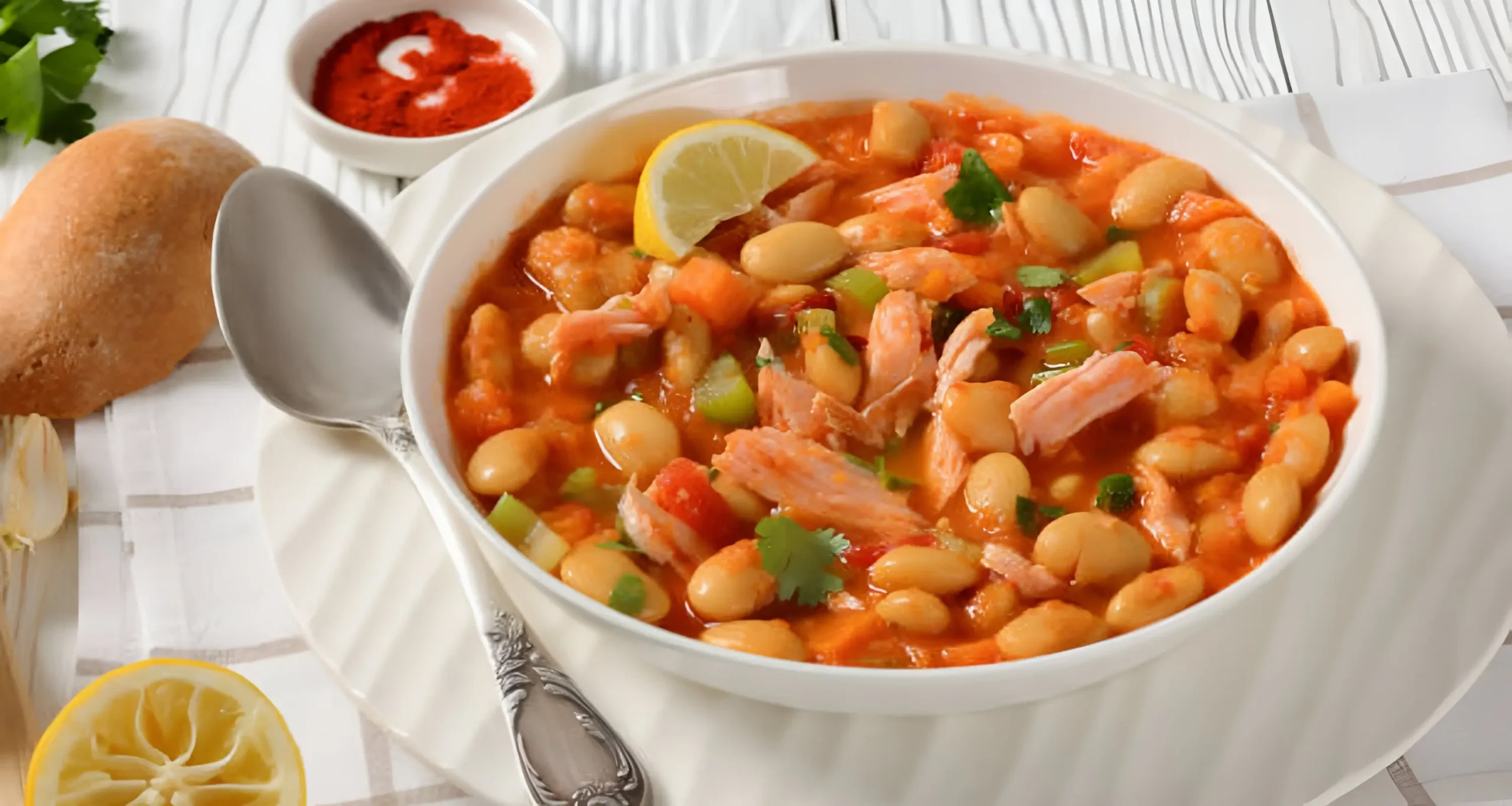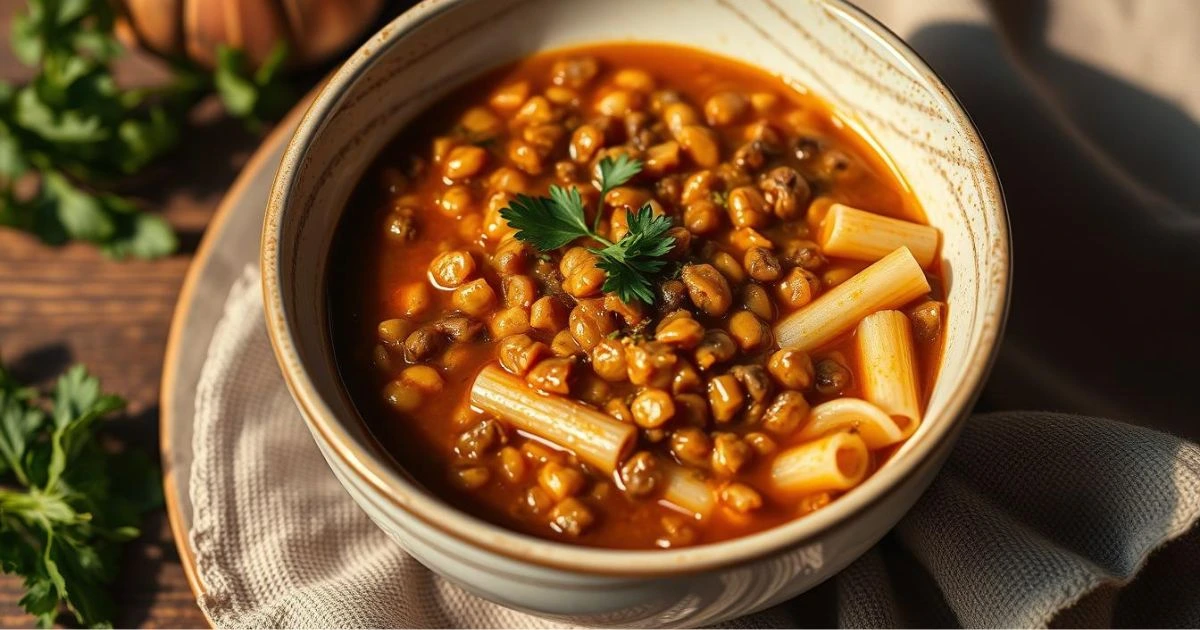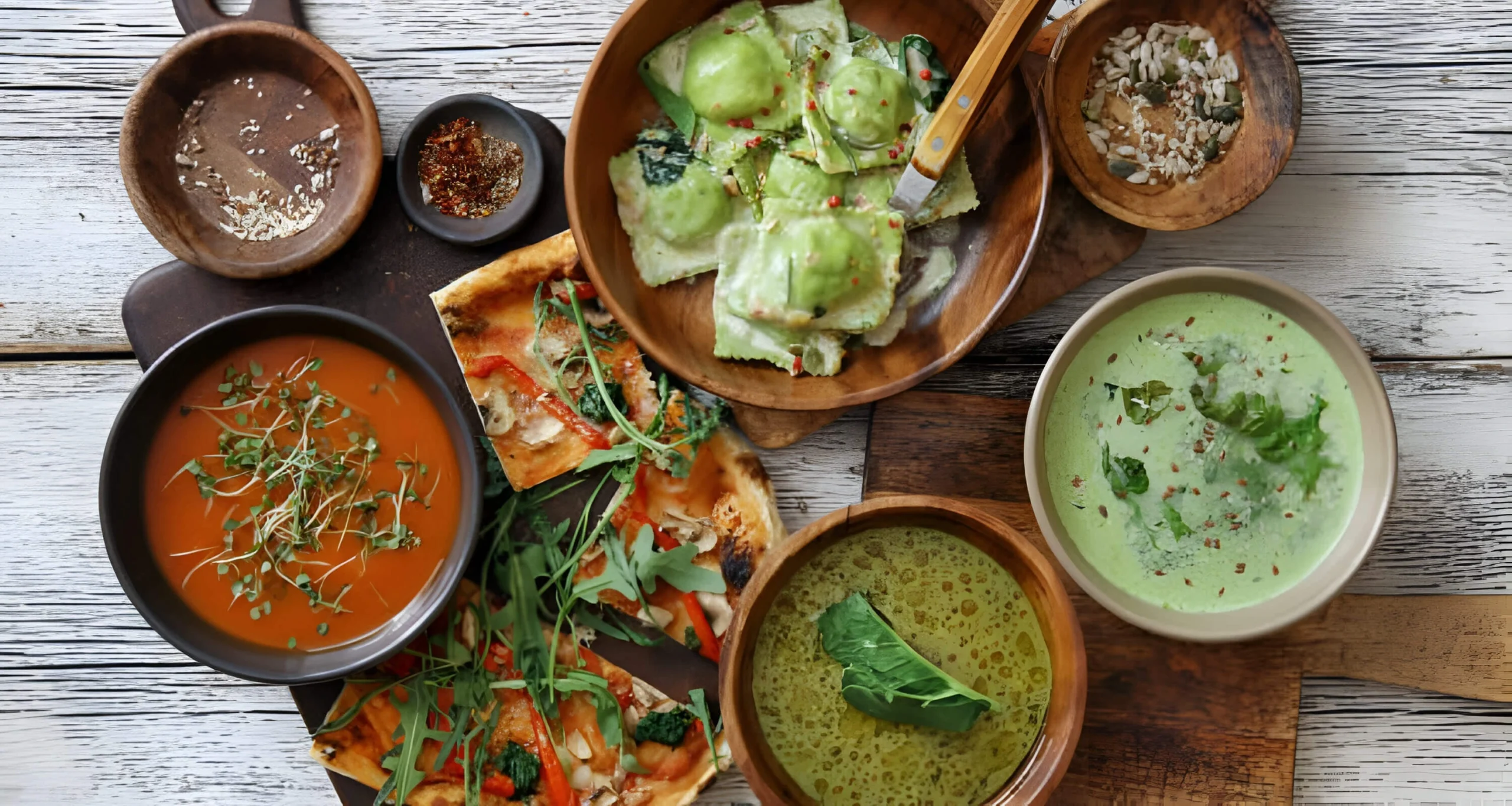Relish Authentic Asian Noodle Soup for Ultimate Comfort
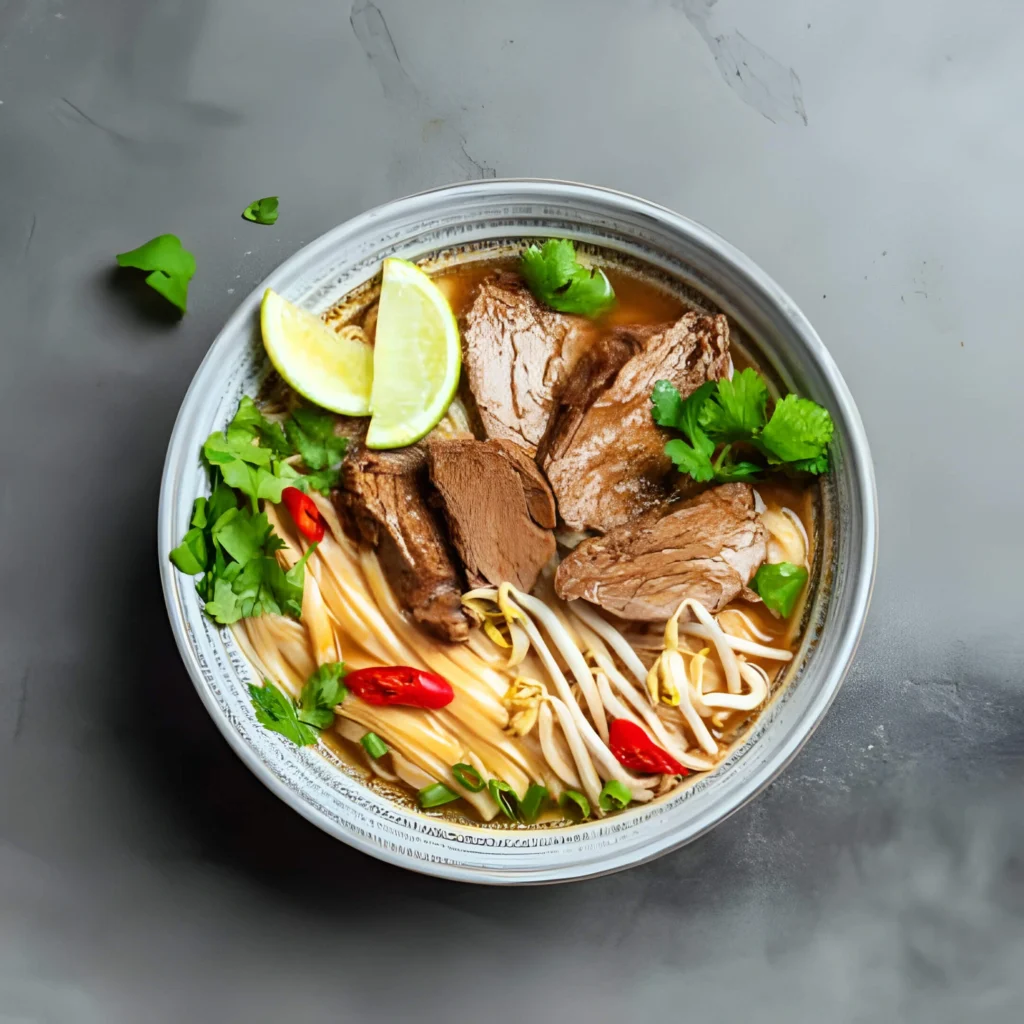
Explore the world of Asian noodle soup, a comfort food that warms your heart. These dishes are more than just meals. They are a journey through rich cultural traditions and amazing flavors that connect people across the globe.
Starting your noodle soup adventure is easy. It takes you from Bangkok’s street markets to Tokyo’s kitchens. You’ll find a wide range of tastes, textures, and ingredients that please every taste bud.
Whether you’re an experienced cook or just starting, learning to make Asian noodle soup will improve your cooking. Each recipe has its own story, mixing old techniques with new cooking methods. This makes these soups both true to their roots and easy to make at home.
Key Takeaways
- Asian noodle soup represents a rich culinary tradition
- Recipes vary widely across different regions
- Easy noodle soup can be prepared at home with practice
- Each soup tells a unique cultural story
- Ingredients and techniques create complex flavor profiles
Understanding the Rich Heritage of Asian Noodle Soups
Asian noodle soup is more than just a meal. It carries centuries of tradition, cultural exchange, and creativity. Each bowl shares a story of flavor, technique, and community across Asia.
Regional Variations Across Asia
The world of noodle soups in Asia is incredibly diverse. Different areas have their own unique styles. These styles reflect local ingredients and cooking methods:
- Japan: Ramen with rich, complex broths
- China: Hearty Lanzhou hand-pulled noodle soups
- Vietnam: Light, aromatic pho with fresh herbs
- Thailand: Spicy and tangy noodle variations
Cultural Significance and Traditions
Noodle soups are more than food in Asian cultures. They symbolize comfort, hospitality, and family bonds. Sharing a traditional noodle soup is a way to connect generations.
Historical Evolution of Noodle Soups
The history of noodle soups is long and fascinating. From the Silk Road to today’s kitchens, they’ve evolved. Yet, they’ve kept their cultural heart.
“A bowl of noodle soup is a window into a culture’s soul.” – Traditional Asian Culinary Wisdom
Essential Ingredients for the Perfect Asian Noodle Soup
Starting to make delicious Asian noodle soups means knowing the key ingredients. These ingredients turn simple things into a great meal. It’s all about choosing the right parts for a tasty dish.
The heart of a great Asian noodle soup is its main ingredients. They mix together to give you a soup full of flavor and texture. It’s a treat for your taste buds.
Essential Noodle Types
- Rice noodles (thin and delicate)
- Wheat noodles (chewy and robust)
- Glass noodles (transparent and light)
- Egg noodles (rich and golden)
Flavor-Building Ingredients
| Category | Key Ingredients | Flavor Profile |
|---|---|---|
| Aromatics | Garlic, ginger, shallots | Sharp, pungent base notes |
| Liquid Base | Chicken stock, vegetable broth | Rich, depth of flavor |
| Seasonings | Soy sauce, fish sauce, miso | Umami, salty complexity |
Choosing the right protein is key when making Asian noodle soups. Whether it’s chicken or shrimp, it changes the soup’s taste. Fresh vegetables like bok choy and mushrooms make the soup healthy and colorful.
Pro Tip for Home Cooks
Quality ingredients are the secret to an authentic and delicious Asian noodle soup. Always choose fresh, seasonal produce and high-quality proteins to elevate your cooking.
Learning about these essential ingredients will help you make amazing Asian noodle soups at home.
Mastering the Art of Flavorful Broth Making
Creating a great asian noodle soup starts with the broth. The right broth turns simple ingredients into a dish that warms your heart. Your journey into making oriental soup recipes noodles begins with learning to make rich, flavorful broths.
Broths are the heart of any noodle soup, bringing flavors that make the dish memorable. Whether you’re cooking at home or dreaming of being a chef, knowing how to make broth is key. It makes your asian noodle soup go from good to great.
Bone Broth Fundamentals
Traditional bone broths are the base for many oriental soup recipes noodles. The process is simple yet important:
- Choose high-quality bones (beef, chicken, or pork)
- Simmer them slowly for 6-8 hours
- Remove any impurities
- Get all the flavor and nutrients you can
Vegetarian Broth Alternatives
For those who love plant-based foods, there are great vegetarian broths. Mushroom, kombu, and vegetable-based stocks add depth and richness to your soup.
| Broth Type | Key Ingredients | Flavor Profile |
|---|---|---|
| Mushroom Broth | Shiitake, dried mushrooms | Earthy, umami-rich |
| Kombu Broth | Seaweed, water | Subtle, mineral-like |
| Vegetable Stock | Mixed vegetables, herbs | Light, aromatic |
Seasoning and Aromatics Guide
The secret to a great broth is its aromatics. Ginger, garlic, star anise, and green onions are key. They turn a simple liquid into a flavor explosion.
“A great broth tells a story of tradition, technique, and passion” – Chef Ming Tsai
Types of Noodles and Their Unique Characteristics
Exploring Asian noodle soup reveals a wide range of noodles. Each noodle adds its own texture and flavor to your soup. This makes choosing noodles a fun adventure.
As you explore Asian noodle soup noodles, you’ll find many unique types:
- Wheat Noodles: Versatile and chewy, perfect for robust broths
- Rice Noodles: Delicate and light, ideal for subtle flavor absorption
- Egg Noodles: Rich and slightly golden, providing a luxurious texture
- Glass Noodles: Translucent and tender, made from mung bean or sweet potato starch
When picking noodles for your soup, think about cooking time and texture. Wheat noodles are forgiving, but rice noodles need careful timing to avoid mushiness.
“The right noodle can elevate a simple soup into a culinary masterpiece.” – Traditional Asian Cooking Wisdom
Knowing about noodle characteristics helps you make a delicious and authentic soup. Try different noodles to find your favorite!
The Ultimate Guide to Asian Noodle Soup Preparation
Making delicious Asian noodle soups is more than just mixing ingredients. It’s about precision, technique, and the right approach. Whether you’re cooking at home or love to experiment in the kitchen, learning to make easy noodle soups can change your cooking game.
To make authentic Asian noodle soups, you need to know some key preparation tips. These tips will take your cooking from simple to amazing. Let’s explore the important elements for making soups that taste like they came from a restaurant.
Essential Equipment for Soup Preparation
- Large stockpot with heavy bottom
- Sharp chef’s knife
- Cutting board
- Strainer or fine-mesh sieve
- Ladle for serving
- Optional: Mandoline for precise vegetable cutting
Step-by-Step Cooking Process
- Prepare all ingredients before starting
- Create a flavorful base broth
- Cook proteins separately
- Prepare noodles with precise timing
- Combine ingredients strategically
Timing and Temperature Control
To master Asian noodle soup recipes, you need to know about cooking temperatures. The broth should simmer between 180-200°F. This ensures the flavors are rich without boiling.
Noodles also need careful attention. Overcooking makes them mushy, while undercooking makes them tough. Professional chefs suggest using a kitchen thermometer and a timer for noodle cooking. These tools can make a big difference in your cooking, turning a good dish into a great one.
Common Mistakes to Avoid When Making Asian Noodle Soup
Making the perfect Asian noodle soup needs skill and focus. Many home cooks face challenges when making oriental soup recipes noodles. But knowing common mistakes can help improve your cooking.
Choosing the right noodles is key. The wrong noodles can change the soup’s texture and taste. Rice noodles, wheat noodles, and egg noodles react differently in hot broth.
- Avoid overcooking noodles, which can turn them mushy and unappetizing
- Never rinse cooked noodles with cold water for hot soups
- Select noodles that complement your specific asian noodle soup recipe
Broth preparation is precise. Weak or poorly seasoned broths can ruin a good soup. Here are some tips:
- Develop deep flavors by simmering bones or vegetables slowly
- Balance salt, umami, and aromatic ingredients carefully
- Taste and adjust seasoning throughout the cooking process
Pro tip: Always prepare ingredients before starting to cook, ensuring a smooth and stress-free cooking experience.
The secret to an exceptional Asian noodle soup lies in mastering technique and understanding ingredient interactions.
Temperature control is also vital. Too high heat can damage delicate noodles and ruin the soup’s texture. Let ingredients gently interact, creating a dish that honors Asian culinary traditions.
Protein Options for Your Noodle Soup Creation
Choosing the right protein can make your noodle soup special. The best protein adds nutrition and depth to your soup. Whether you like meat or plant-based options, there’s something for everyone.
Meat and Seafood Selections
Asian noodle soups have many meat and seafood options. These choices can change the soup’s flavor a lot.
- Chicken: A lean and versatile protein that absorbs broth flavors beautifully
- Beef: Provides rich, robust taste and tender meat slices
- Pork: Adds a succulent texture and depth to your soup
- Shrimp: Brings a delicate seafood essence to light broths
Plant-Based Protein Alternatives
Vegetarian or vegan noodle soup lovers have great options. These alternatives make sure everyone can enjoy a tasty bowl of soup.
- Tofu: Soft or firm, it absorbs surrounding flavors perfectly
- Tempeh: Provides a nutty flavor and substantial texture
- Seitan: Offers a meat-like consistency for protein enthusiasts
“The right protein turns a simple soup into a culinary adventure.” – Chef Ming Chen
Try different proteins to find your favorite noodle soup mix. Each protein adds something special, making your soup unforgettable.
Fresh Vegetables and Herbs to Enhance Your Soup
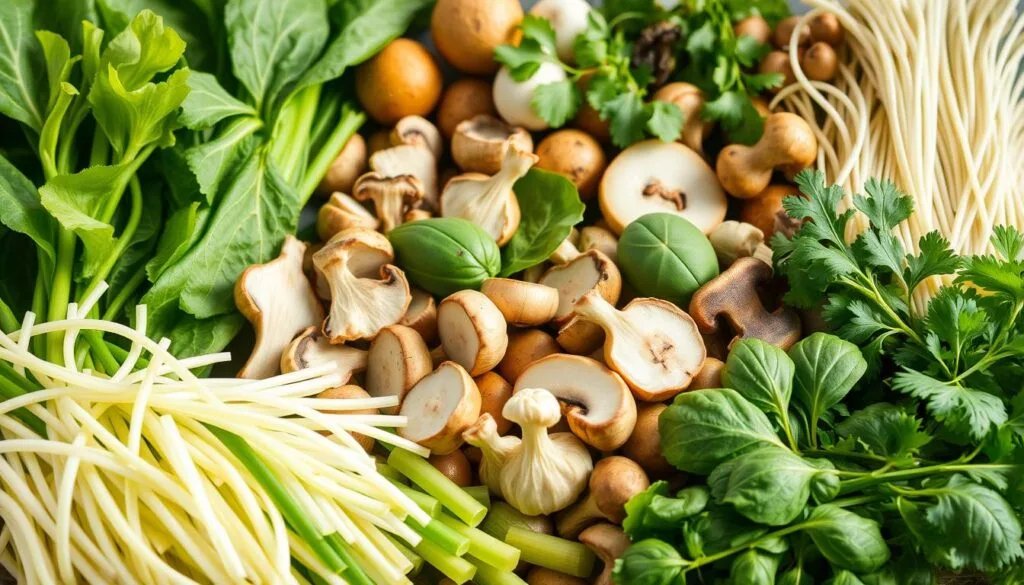
Making a great asian noodle soup is more than just noodles and broth. The right mix of fresh veggies and herbs can turn your soup into a feast for the senses.
Choosing the best vegetables means knowing their flavors and how they cook. Some veggies stay crunchy, while others add deep flavors to your soup.
- Leafy Greens: Bok choy, spinach, and Chinese cabbage add nutrition and color
- Root Vegetables: Carrots and daikon radish bring sweetness and earthiness
- Aromatic Herbs: Cilantro, Thai basil, and green onions elevate the soup’s complexity
For amazing oriental soup recipes noodles, how you prep your veggies is key. Slice them thinly so they cook fast and flavors spread evenly.
| Vegetable | Flavor Profile | Best Cooking Method |
|---|---|---|
| Bok Choy | Mild, slightly sweet | Quick blanch |
| Shiitake Mushrooms | Umami, rich | Sauté before adding |
| Green Onions | Sharp, fresh | Raw garnish |
Pro tip: Add delicate veggies like herbs in the last minute of cooking to keep their bright flavors and nutrients.
Garnishing Techniques for Restaurant-Style Presentation
Turning your easy noodle soup into a restaurant-quality dish is all about garnishing. The right toppings can make your soup go from simple to spectacular. It becomes a feast for the eyes and taste buds.
Garnishing is more than just making your soup look good. It adds texture, flavor, and complexity. The goal is to create a balanced and inviting presentation that makes your dish hard to resist.
Traditional Toppings That Wow
Classic garnishes add authenticity and depth to your soup. Here are some traditional options:
- Finely chopped green onions
- Fresh cilantro leaves
- Crispy fried shallots
- Toasted sesame seeds
- Thin slices of red chili
Modern Garnish Ideas for Creative Cooks
Make your easy noodle soup stand out with innovative garnishes. They spark conversation and delight taste buds:
- Microgreens for a delicate, fresh touch
- Crispy rice paper chips
- Pickled vegetable ribbons
- Flavored oil drizzles
- Edible flower petals
The best garnishes look beautiful and enhance the soup’s flavors. Experiment to find your perfect mix!
Health Benefits of Traditional Asian Noodle Soup
Asian noodle soup is more than just a tasty meal. It’s a nutritional powerhouse that boosts your health and wellness. Traditional oriental soup recipes noodles combine ingredients for many health benefits.
The nutritional profile of asian noodle soup is great for a balanced diet. Let’s look at the main health benefits:
- Immune System Boost: Packed with nutrient-rich vegetables and proteins
- Digestive Health: Bone broth contains collagen and amino acids
- Hydration Support: High liquid content helps maintain body fluid balance
- Low-Calorie Nutrition: Typically lighter than many western soup options
Ingredients in oriental soup recipes noodles add a lot of nutritional value. Ginger, a common ingredient, has anti-inflammatory properties. Lean proteins like chicken or tofu give essential amino acids. Vegetables add vitamins and minerals for overall wellness.
When making asian noodle soup, use fresh ingredients and balanced amounts. Choose whole grain noodles, lean proteins, and lots of vegetables for the best health benefits. Your body will appreciate this nourishing, comforting meal.
“Food is medicine when chosen wisely” – Traditional Asian Proverb
Quick and Easy Asian Noodle Soup Recipes for Beginners
Starting with Asian noodle soup recipes might seem hard, but it’s not. With some basic tips and simple recipes, anyone can make tasty meals at home. It’s all about mastering easy techniques and having a few go-to recipes.
You don’t need to be a pro to cook authentic Asian noodle soups. These beginner-friendly recipes will help you make comforting, delicious bowls quickly.
30-Minute Quick Recipes
Even busy cooks can enjoy top-notch Asian noodle soups with these quick options:
- Chicken and Rice Noodle Soup
- Vegetarian Miso Ramen
- Shrimp Pho Express
Make-Ahead Preparation Tips
Make your noodle soup prep easier with these smart tips:
- Make broth bases ahead of time
- Chop veggies before cooking
- Keep pre-cooked proteins ready
“The secret to great Asian noodle soup is in the preparation, not complicated cooking techniques.” – Chef Ming Tsai
| Recipe | Prep Time | Difficulty |
|---|---|---|
| Chicken Udon Soup | 25 minutes | Beginner |
| Vegetable Pho | 30 minutes | Easy |
| Seafood Ramen | 35 minutes | Intermediate |
Remember, practice makes perfect when exploring Asian noodle soup recipes. Start simple and gradually build your skills.
Seasonal Adaptations for Your Noodle Soup
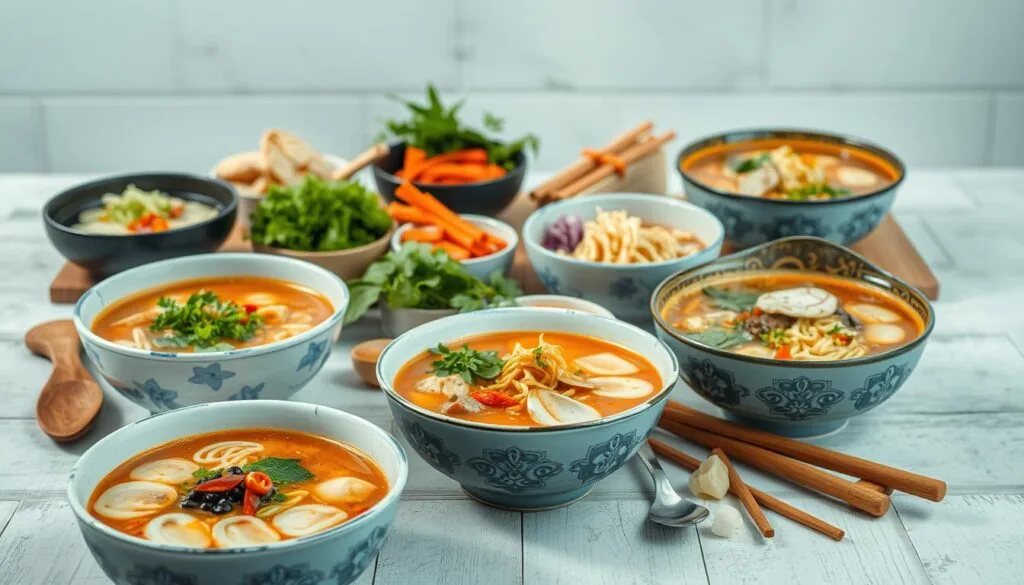
Making the perfect asian noodle soup means knowing how to use seasonal ingredients. Each season offers special flavors and produce that can make your noodle soup stand out.
Your noodle soup can change with the seasons. In summer, you’ll want light and cool soups. Here are some tips for each season:
- Summer: Chilled noodle soups with crisp vegetables
- Autumn: Robust broths with root vegetables
- Winter: Hearty, warming soups with rich proteins
- Spring: Fresh, green ingredient-focused recipes
Ingredients are key to changing your noodle soup with the seasons. Using fresh, local produce makes your dish special.
| Season | Key Ingredients | Recommended Style |
|---|---|---|
| Summer | Cucumber, Mint, Lime | Cold Noodle Soup |
| Autumn | Pumpkin, Mushrooms, Ginger | Spicy Miso Soup |
| Winter | Beef, Daikon, Garlic | Hearty Ramen |
| Spring | Asparagus, Bamboo Shoots | Light Vegetable Soup |
Pro tip: Always choose ingredients at their peak freshness for the best flavor and nutrition.
Being flexible is important when making seasonal noodle soup. Your creativity can turn simple ingredients into amazing dishes that celebrate each season’s best.
Storage and Reheating Guidelines for Leftover Soup
Keeping your homemade asian noodle soup fresh is key. You need to store and reheat it right. This way, your soup stays safe and tasty for later.
Refrigeration is vital for your soup’s quality. Here are some important storage tips:
- Cool soup completely before storing
- Use airtight containers
- Store in the refrigerator within 2 hours of cooking
- Keep soup refrigerated for 3-4 days maximum
Reheating your soup needs care to avoid soggy noodles and flavor loss. The right method can bring back its original taste and texture.
- Remove soup from refrigerator 10-15 minutes before reheating
- Use low to medium heat when warming
- Stir occasionally to distribute heat evenly
- Add fresh herbs or a splash of broth to refresh flavors
Pro tip: Separate noodles from broth when storing to maintain optimal texture.
For the best taste, eat your leftover soup in 2-3 days. If you’re unsure about its quality, it’s safer to throw it away.
Pairing Suggestions and Side Dishes
Enhancing your experience with Asian noodle soup is more than just the soup. The right sides can turn a simple meal into a feast for your senses.
When you pair your noodles with the right dishes, it makes the meal even more thrilling. Learning how to pair can elevate your dining experience.
Traditional Accompaniments
Classic pairings for Asian noodle soup include various side dishes that match the main course:
- Steamed vegetable dumplings
- Crispy spring rolls
- Pickled vegetables
- Seaweed salad
- Kimchi
“The right side dish can elevate a simple soup into a memorable meal.” – Chef Ming Tsai
Fusion-Style Combinations
Modern trends bring exciting fusion pairings that mix traditional Asian noodle soup with new flavors:
- Truffle-infused edamame
- Sriracha-glazed chicken wings
- Wasabi deviled eggs
- Miso-roasted vegetables
Choosing drinks that match your soup’s taste is important. Green tea, sake, or light Asian beer are great choices.
Pro tip: Balance is key when choosing side dishes. Aim for contrasting textures and complementary flavors that enhance your soup’s primary taste.
Customizing Your Asian Noodle Soup for Dietary Restrictions
Creating delicious asian noodle soup recipes doesn’t mean you have to give up your dietary needs. You can enjoy a warm bowl of easy noodle soup even if you’re gluten-sensitive, vegan, or watching your sodium intake. Just make a few smart ingredient swaps.
For those avoiding gluten, there are many noodle alternatives:
- Rice noodles (100% gluten-free)
- Kelp noodles
- Shirataki noodles
- Zucchini noodles
Vegetarian and vegan soup lovers can use plant-based alternatives instead of traditional meat broths. Mushroom broth adds a rich umami flavor. Miso and vegetable stocks also add depth without animal products.
Low-sodium adaptations are easy. Use fresh herbs, citrus zest, and spices like ginger and garlic to keep flavors strong. This way, your asian noodle soup recipes stay flavorful without too much salt.
Pro tip: Always taste and adjust seasonings gradually to maintain the authentic soup experience.
Protein diversity means everyone can make their easy noodle soup their own. Tofu, tempeh, seitan, and legumes are great plant-based protein sources. They fit well into most recipes.
Conclusion
Exploring Asian noodle soup opens a world of flavors and traditions. You’ve started a journey through oriental soup recipes noodles. This journey is full of new tastes and techniques to try at home.
Every noodle soup you make connects you to a long line of cooks. You’ve learned about regional flavors and how to make a great broth. Now, you can turn simple ingredients into meals that nourish both body and soul.
These recipes are incredibly versatile. They suit both new cooks and seasoned chefs. Start playing with different ingredients and garnishes. Your unique twist makes each dish special.
Your noodle soup journey is just starting. Keep learning, share your dishes, and explore more of Asian cuisine. Each recipe is a chance to travel through taste, bringing global traditions to your table.
FAQ
What makes Asian noodle soups different from other types of soup?
Asian noodle soups stand out because of their complex flavors and diverse noodles. They use rich broths and unique seasonings like ginger and soy sauce. Fresh ingredients add a balance of flavors and textures.
How can I choose the right noodles for my Asian soup?
Choosing noodles depends on your soup’s style and texture. Rice noodles are good for light broths, while wheat noodles suit heartier soups. Egg noodles add a rich flavor. Think about cooking time and how the noodle absorbs broth.
Are Asian noodle soups difficult to make at home?
No, they’re not hard at all! Many recipes are easy for beginners. With the right ingredients and basic cooking skills, you can make tasty soups in under 30 minutes. Start simple and get better with practice.
Can I make vegetarian or vegan Asian noodle soup?
Yes, you can! Use plant-based broths, tofu, and vegetables for delicious vegetarian and vegan soups. Mushroom broth and vegetable stock are great bases for meat-free soups.
What are the best proteins to use in Asian noodle soups?
Traditional proteins include chicken, beef, pork, and seafood like shrimp. For plant-based options, try tofu, tempeh, and seitan. Choose proteins that match your broth and enhance the flavor.
How do I store and reheat leftover Asian noodle soup?
Keep broth and noodles separate to avoid soggy noodles. Store in airtight containers for 3-4 days. Warm the broth first and add fresh noodles to reheat. Avoid microwaving noodles to keep them from getting mushy.
Are Asian noodle soups healthy?
Many Asian noodle soups are nutritious. They often have bone broth, lean proteins, vegetables, and herbs. To make them healthier, use fresh ingredients, control sodium, and balance protein and vegetables.
What kitchen tools do I need to make Asian noodle soup?
You’ll need a large stockpot, ladle, sharp knife, cutting board, and strainer. A wok, spider strainer, and prep bowls are optional but helpful. Having these tools makes cooking more efficient and fun.
Add a Dash of Your Thoughts!
There are no reviews yet. Be the first one to write one.


